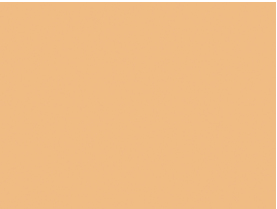DIY Design: How to Choose Wall Color
A few steps to help you choose the perfect paint colors for inside your home.
Painting the inside of your home can be a daunting task. Choose your colors, buy the special tools, clear out furniture, tape and lay down plastic, and then hours of painting; it’s all guaranteed to make your wallet ache and your arm muscles sing. Needless to say, you don’t want to do it twice. Let me teach you how to choose the right colors, the first time.
There’s a science to how your human body interacts with certain colors. Colors evoke emotion and bring forth memories. Color associations can be related to religion, culture, or even politics! However, there are underlying trends that experts have studied and pared down for easy digesting. Thank you color scientists!
Where in the world do you begin? RIGHT HERE RIGHT HERE!
Ashley's Guide To Picking A Color
1. Consider Your Canvas
What are you painting? How do you want to feel in this space? Energized? Tranquil? A kid’s playroom should have a very different ambiance than a kitchen or master bedroom.
How big is the space? Color can affect how large or small a room feels. A long hallway can be painted to feel wider. A family room with low ceilings can be painted to look taller. You can even make a square room feel like a rectangle. These are the same optical tricks that guarantee black clothing will never go out of style.
Additionally, what will stay in the room? Do you have wood grain cabinetry that you wouldn’t dream of changing? How about that giant Turkish rug from you Grandma? If possible, take these things (or pieces of them) to the store when you choose your paint. It will be harder to recollect that carpet color when you have 10,000 paint chips staring back at you.
2. Well hello, HUE do you do?
Hue is what most people would consider “color.” Each hue has a spot on the color wheel.
When you really think about it, you could probably guess the generally accepted color-mood associations. But why guess when Sherwin-Williams explains it so well?
Red: Dynamic, exciting and stimulating.
Orange: Mellower than red, yet still stimulating and warm; friendly.
Yellow: Cheerful, radiant, happy, uplifting.
Green: Relaxing, refreshing, tranquil.
Blue: Calming, comforting, cooling, peaceful.
Violet: Dignified, rich, noble, intense.
Cool colors: Greens, blues and violets; tend to recede and make rooms appear larger and more spacious.
Warm colors: Yellows, reds and oranges; seem to advance and make a room feel smaller and more intimate.
This is where personal associations play the biggest role. Look over the list, pick out a few hues that suit your space and then pick your favorite! For example, if you’re decorating the master bathroom and want it to feel like a spa, how about green or blue? If greens remind you of the mountains and blue reminds you of hospital rooms, green for the win!
Personal preference should play a big role in your final choice. Unfortunately, if you’re like my sister and your “favorite color is rainbow,” you may have a bit of trouble.
Oh! And don’t forget: is there anything in the room that will be staying? Be sure that the hue of your new color complements the hue of your existing colors.
Tip: Sessions College has an amazing online color calculator to help you choose colors that complement each other.
2. Now here’s something of VALUE.
Value is the lightness or darkness of a color; how close it is to white or black. For example, pink is a lighter value of red. Here are the main color values of red:
Value has the greatest affect on how large or small the room feels; here’s that little black dress optical trick again. Lighter colors make things feel more airy and spacious, while darker colors feel cozy and womb-like.
In most cases, unless you’re trying to make a statement, stick to the lighter half of the value chart. A predominantly dark room can easily feel oppressive and depressing. That being said, if most of your walls are white, darker colors can make fantastic accents.
If you’re willing to play with color, there are few optical illusions you can use to your advantage. For example, a dark wall at the end of a long, light hallway makes the hallway feel longer. A dark color on two opposite walls of a square space makes the space feel rectangular. Paint ceilings white to make the space feel tallest. This color stuff can be verrrryyy tricky. Keep it simple or get a designer involved.
It’s also important to remember that light affects how a color value is perceived. For example, if you have a giant picture window that gets direct sunlight, your room’s color value will change throughout the day. It will be very light when the sun shines in and significantly darker as it passes out of sight in the afternoon. The same goes for artificial lighting. I could (and will) write a whole blog post about color temperatures and other fun stuff, but for now, just understand that it matters. This is why patch tests are vital.
3. Hey baby, what’s your SATURATION?
Saturation is the intensity of a color. It’s technically the amount of gray in the color. The grayer, the less saturated.
High saturation colors tend to be energizing. Blue is usually a calming color but make it an intense sapphire blue and you’ll be primed for action.
Low saturation colors tending to be calming. Green can be a refreshing color but make it a low intensity sage green and you’ll be chillin’ like a villain.
Don’t worry too much about this one. Use your instincts. Don’t paint your kid’s room Kelly Green. They won’t sleep very well and during the daylight hours, they’ll be bouncing off the walls.
4. Time for the SHOPPING block.
Time to go shopping! I hope you’re ready to brave the bombardment of color. It’s going to be intense, but you’re well prepared.
Visit your local home improvement or paint store. Remember what you want! Those other colors and saturations can be so enticing but stay the path! If you get confused, ask for help.
And if you’re still having trouble deciding, buy multiple so you have choices. It’s ok because you’re only buying a quarter gallon for now. I repeat: ONLY BUY A QUARTER GALLON for now.
5. PATCH TEST! I do not jest.
At first, ONLY BUY A QUARTER GALLON of each color. Take them home and do a patch test. Paint a patch (about the size of your torso) of each color. Each room has different lighting, wall texture, etc. Paint then observe the patch at different times of day. Do this for every color you choose.
When you’re ready and satisfied, paint the whole darn wall. Finally!
6. How we did it in the ‘ole RV…
One of the first things we did in our new RV was paint the walls. We couldn’t wait to cover up that tan and white faux finish wallpaper.
Color is a wonderful and easy way to differentiate spaces. In our tiny space, I used this to its greatest advantage. (Note: colors appear more saturated on computer screen than in real life.)
Most of our walls are this creamy white, a hue that matched the wood grain cabinets and a lightness that makes the space feel large. Then there’s an accent color to differentiate every “area.”
We used this light, high saturation yellow behind my office desk to give me energy and lift my spirits. We also used it in the tiny toilet room. Light and bright keeps the room feeling big but gives a bold statement.
We used this medium, high saturation orange on our living/dining room wall to make the space feel stimulating and friendly. This high of saturation should only be used for small walls. I knew that curtains or furniture would cover most of this wall so I could afford to be bold.
We used this dark, high saturation blue on our bed wall. It’s calming and comforting. The bed sits in our RV slide out like a little cocoon. The darkness of that headboard wall makes the cocoon look deeper and more inviting. It also reflects little light and helps keep our pillow area nice and dark.
That's all! Farewell for now and happy painting!
Citations
1. The Elements of Design by Joshua David McClurg-Genevese
2. Sessions College: Color Calculator
3. Science Lights the Way for Effective Color Use by Sherwin-Williams
4. Feeling Moody? Ten Room Colors That Might Influence Your Emotions by Fox News Magazine
5. Real or Imagined, Color Can Visually Expand Small Spaces by Sherwin-Williams.
6. Color Psych 101 by Sherwin-Williams







